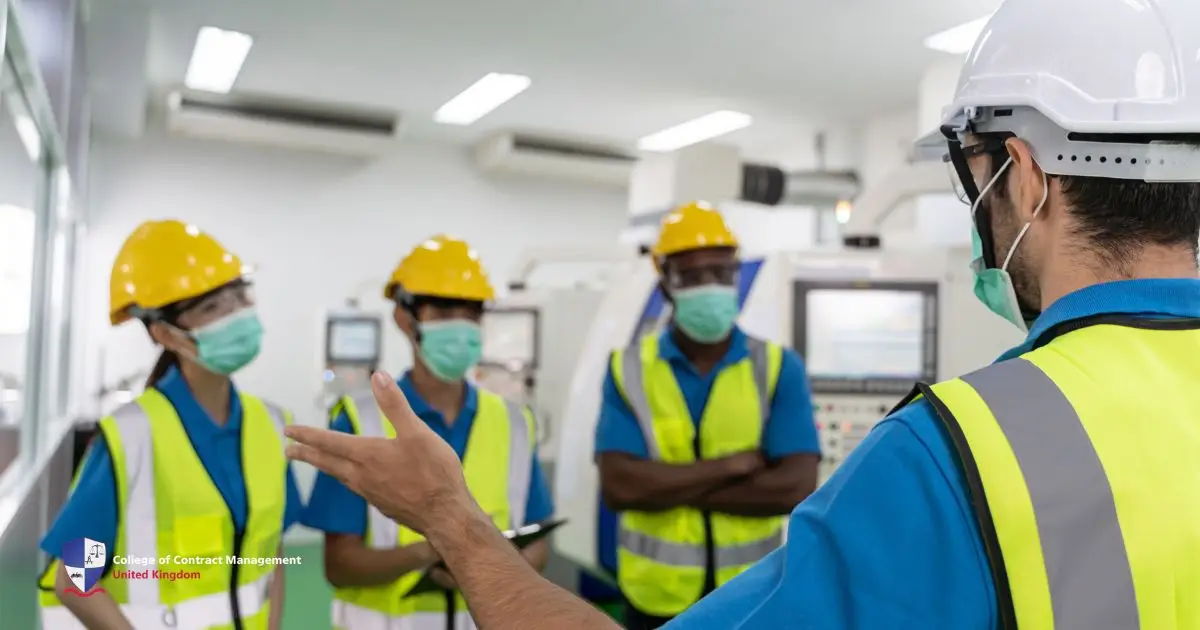Managing risks is important for any business. Spotting potential hazards is crucial for keeping everyone safe at work. So whether you're in an office, a factory, or on a construction site you'll be safe. A solid risk assessment is your first line of defence against accidents, injuries, and even expensive legal issues. To make things easier, using a risk assessment template can save you time and reduce stress. Here’s a simple look at what you need to know about the basics of risk assessment. Additionally. here's how a template can make it all easier. Ultimately, it helps create a safer and more organised workspace.
This template is a simple tool to help you keep track of what you find during your work. It ensures you don’t miss any important steps in the process. It also makes it easier to spot potential hazards. So by using this guide, you can better manage risks. This is especially true when things get complicated. Lastly, it helps you focus on the most pressing hazards so you can deal with them quickly.
What is risk assessment?
Risk assessment is all about identifying potential hazards and then taking steps to reduce or eliminate those risks. This process helps businesses stay compliant with health and safety regulations. It also protects employees from preventable accidents. Moreover, risk assessments are essential for keeping work environments safe. This also helps protect the business from legal issues and maintain productivity.
A solid risk assessment isn’t just about ticking off a checklist; it’s about taking a close look at the risks that could affect workers' safety. It helps businesses implement steps to prevent workplace injuries, sickness, and the chance of expensive legal issues from negligence. Using a risk assessment template is super helpful in this process because it allows you to keep track of your findings in an organised way.
Benefits of risk assessment templates
Managing risk might seem overwhelming, but it doesn’t have to be. Using a risk assessment template can simplify the process significantly. Templates provide a clear structure. As a result, it helps you identify potential hazards. As well as evaluate their impact, and develop strategies to address them. So, by streamlining this task, you'll save time and reduce stress. This leads to making risk management much more manageable.
- Saves Time: A pre-structured format allows you to quickly fill in necessary details, speeding up the assessment process.
- Consistency: It ensures every hazard is analysed and documented the same way across different departments, maintaining uniformity.
- Focus on Content: With the formatting already taken care of, you can focus more on identifying and evaluating risks rather than worrying about the layout.
Using a template for risk assessment can help businesses stay organised and work more efficiently. It also cuts down on the chances of making mistakes, which can result in important risks being missed or not evaluated properly. Whether you’re just starting or have been managing risks for a while, a template provides a straightforward way to make sure you don’t overlook anything important.
Key parts of a risk assessment template
A good risk assessment template should have some important parts to make sure everything's covered. These elements help you stay organised and ensure you don't miss anything crucial. You can expect simple sections that guide you through identifying risks. As well as evaluating their impact, and planning ways to manage them effectively. This way, you're always prepared:
- Hazard Identification: A place to list potential dangers in the workplace.
- Risk Evaluation: A section to assess the likelihood and severity of each hazard.
- Control Measures: Details about the steps to mitigate or eliminate risks.
- Responsibilities: Designate individuals responsible for managing each risk.
- Review Schedule: A timeline to regularly update and review the assessment.
Using these parts makes it easier to keep track of all the important things when assessing risks. A simple risk assessment template helps you see potential issues quickly and creates a roadmap for dealing with them. This way, you can spot problems before they escalate and come up with solutions to keep everything on track.
How to create a risk assessment template
Making a risk assessment template doesn't have to be difficult or time-consuming. A clear and simple template allows you to assess and manage risks easily. Just follow these easy steps, and you’ll be on your way to creating something that works for you. It can streamline the process and help keep things organised without the stress.
- Identify hazards: Walk through the workplace and take note of any potential hazards.
- Determine who is at risk: Consider which individuals (employees, contractors, visitors) may be exposed to these risks.
- Assess the risks: With a risk assessment template, you can evaluate how likely it is that the hazard will cause harm and how severe the consequences might be.
- Implement control measures: Identify strategies to minimise or eliminate the risks such as installing barriers or offering training.
- Record findings: Document all identified hazards, risks, and control measures.
- Review regularly: Plan periodic reviews to ensure that the risk assessment remains current.
A well-structured risk assessment will not only protect the workforce but also demonstrate compliance with health and safety regulations. By following the steps outlined above and using a template, you ensure that your workplace conditions change over time. Additionally, the template makes it easy to adjust.
The role of health and safety in risk assessment
Health and safety are really important when it comes to assessing risks at work. It's crucial to pay attention to both physical safety and mental well-being. By doing this, you can create a workplace that not only meets legal requirements but also promotes a positive environment. A good risk assessment template should cover more than just physical safety; it should also look at things like stress, harassment, and mental health issues.
Addressing risks about mental health awareness is just as important as dealing with physical hazards. Psychological hazards, such as workplace can be bullying. As well as burnout and poor work-life balance. A thorough risk assessment template helps ensure that these issues are given the same attention as physical safety concerns. It also promotes a healthier and more supportive workplace culture.
Benefits of using a Risk Assessment Template
Using a risk assessment template at work has a lot of advantages. It helps you spot potential dangers and keeps everyone safe, making it easier to stay organised. Plus, having a straightforward template makes communicating about risks simpler and lets you see how things improve over time. In short, it boosts the safety vibe in your workplace!
- Efficiency: It simplifies and streamlines the risk assessment process, allowing for faster completion.
- Consistency: A template ensures that every hazard is analysed and documented consistently across the business.
- Compliance: Helps ensure that risk assessments meet legal and regulatory requirements.
- Proactive Risk Management: Using a risk assessment template encourages regular reviews, allowing businesses to stay ahead of potential hazards.
Templates can be super useful for businesses, especially in fields like construction or manufacturing where risk assessments happen often. By getting into the habit of managing risks regularly, companies can catch potential problems before they escalate. This practice can save time, money, and resources over time.
Common workplace risks to address
Every workplace has its challenges and risks that need attention. That's why it's essential to customise your risk assessment template to fit your specific industry. However, there are some common risks that nearly all workplaces should be aware of and address to ensure a safer and more productive environment for everyone.
- Slips, Trips, and Falls: Caused by wet floors, uneven surfaces, or poorly maintained walkways.
- Fire Safety: These types of hazards can stem from overloaded electrical systems, faulty wiring, or improper storage of flammable materials.
- Manual Handling Risks: Lifting heavy objects or awkward postures can lead to musculoskeletal injuries.
- Chemical Exposure: Improper handling or storage of chemicals can pose serious health risks.
When thinking about safety at work, it’s important to consider things like noise levels. As well as electrical safety, and the potential for workplace violence. By tackling these common issues, businesses can make their environments safer and cut down on accidents. Using a simple risk assessment template can help you cover all these important areas.
Choosing the Right Risk Assessment Template
When picking a risk assessment template, it's important to choose one that fits your needs. Look for a template that's easy to use and can be customised to suit your situation. Make sure it includes key parts like identifying hazards, assessing risks, and outlining control measures. Whether you work in construction, healthcare, or another field, find a template that addresses your specific workplace needs.
When choosing a template, go for one that’s flexible in design so you can tweak it as your business grows and changes. It’s key to pick a template that makes things easier while still covering all the important parts of risk management. You might want to look into industry-specific templates too, since they usually have sections tailored to fit your specific needs.
Training to Improve Risk Assessment Skills
To get a handle on risk assessment, you need some solid knowledge and hands-on practice. Taking a training course can help you make the most of a risk assessment template. The College of Contract Management has courses that show you how to spot and deal with risks in a smart way.
In these courses, you'll learn some crucial skills like identifying risks, knowing the safety rules, and managing potential dangers. You'll get some hands-on practice that will boost your confidence in doing risk assessments. Plus, the training will show you how to adapt these assessments for different industries, so you'll be prepared to tackle the unique risks in your job.
How the College of Contract Management can help
The College of Contract Management offers training courses that can help you gain the skills and knowledge you need to carry out risk assessments effectively. These courses are designed to give you practical insights and strategies to enhance workplace safety and efficiency.
With their comprehensive programmes, you can gain hands-on experience with risk assessments. You'll then learn the latest techniques for managing risks. Their training is designed to ensure that you can make use of risk assessment templates effectively, providing you with the tools to make informed decisions that protect employees and businesses.





